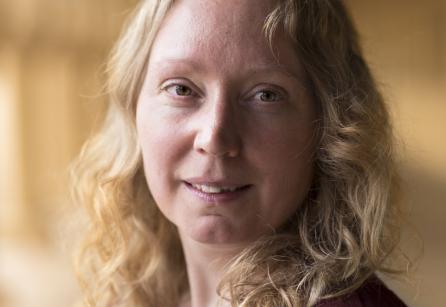News
Public lecture by Michaela Mross
January 9, 2023

The Divinity School is pleased to announce a public lecture by Michaela Mross: "Praising the Patriarchs: Lay Buddhist Choirs in Postwar Sōtō Zen"
Wednesday, February 22, 4:30pm, Common Room
In the 1950s, Sōtō reformers invented a new style of chanting Japanese hymns, which they named Baikaryū (lit., lineage of plum blossoms). Other Buddhist schools had already founded hymn chanting lineages in the early 20th century. When Sōtō reformers tried to rejuvenate their religion after WWII, they used these as models to create their own style of hymn chanting. This practice soon became very popular among lay devotees, especially women. Even today, the annual meeting of the Baikaryū, attended by around 10,000 laypeople, is the largest regular event that the Sōtō Zen school hosts.
This paper examines how different groups of practitioners interpret the practice of hymn chanting. In the official publications of the Baikaryū, clerics promote an “ orthodox” interpretation of singing Buddhist hymns, arguing that the singing is an expression of the realization of buddhahood in the same way as seated meditation. Interviews with lay practitioners suggest that some devotees also interpret the singing through this Sōtō Zen lens but others do not: for some it is a practice offering salvation, for others it offers grief care, and for others it is a form of recreation and leisure providing a social support network. Thus, we find a multitude of views and interpretations that inform the singing of Buddhist hymns, highlighting the multivocality within contemporary Sōtō Zen.
Michaela Mross is assistant professor of Religious Studies at Stanford University. She specializes in Japanese Buddhism, with a particular emphasis on Sōtō Zen, Buddhist rituals, sacred music, as well as manuscript and print culture in premodern Japan. Her first book, Memory, Music, Manuscripts: The Ritual Dynamics of Kōshiki in Japanese Sōtō Zen (University of Hawai’i Press, 2022) explores the history and performance practice of the kōshiki rituals performed exclusively by clerics and suggests that we need to understand Zen as an embodied practice with a rich sonic dimension. She is currently working on a monograph on vernacular hymns and lay Buddhist choirs in contemporary Sōtō Zen.

